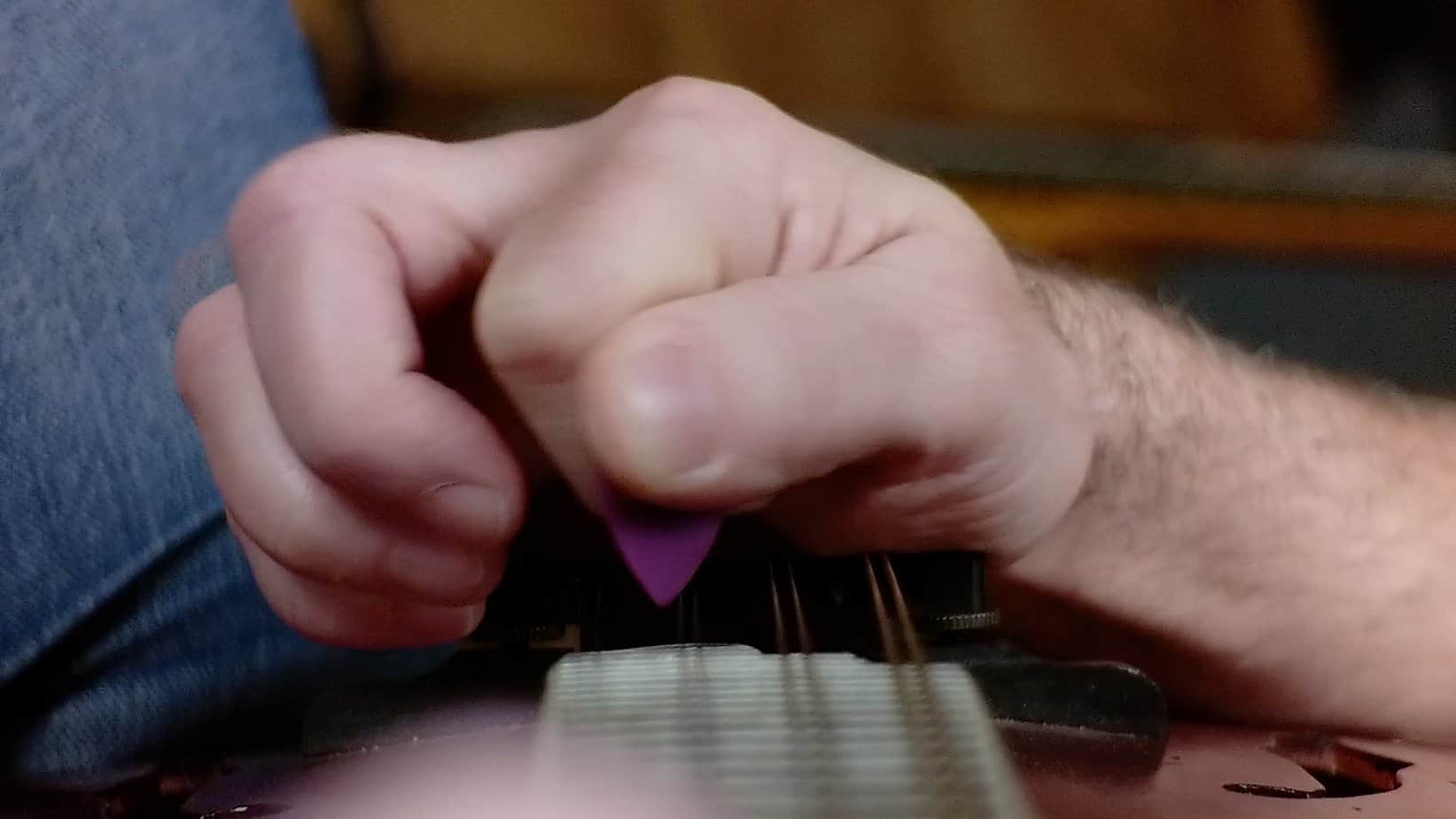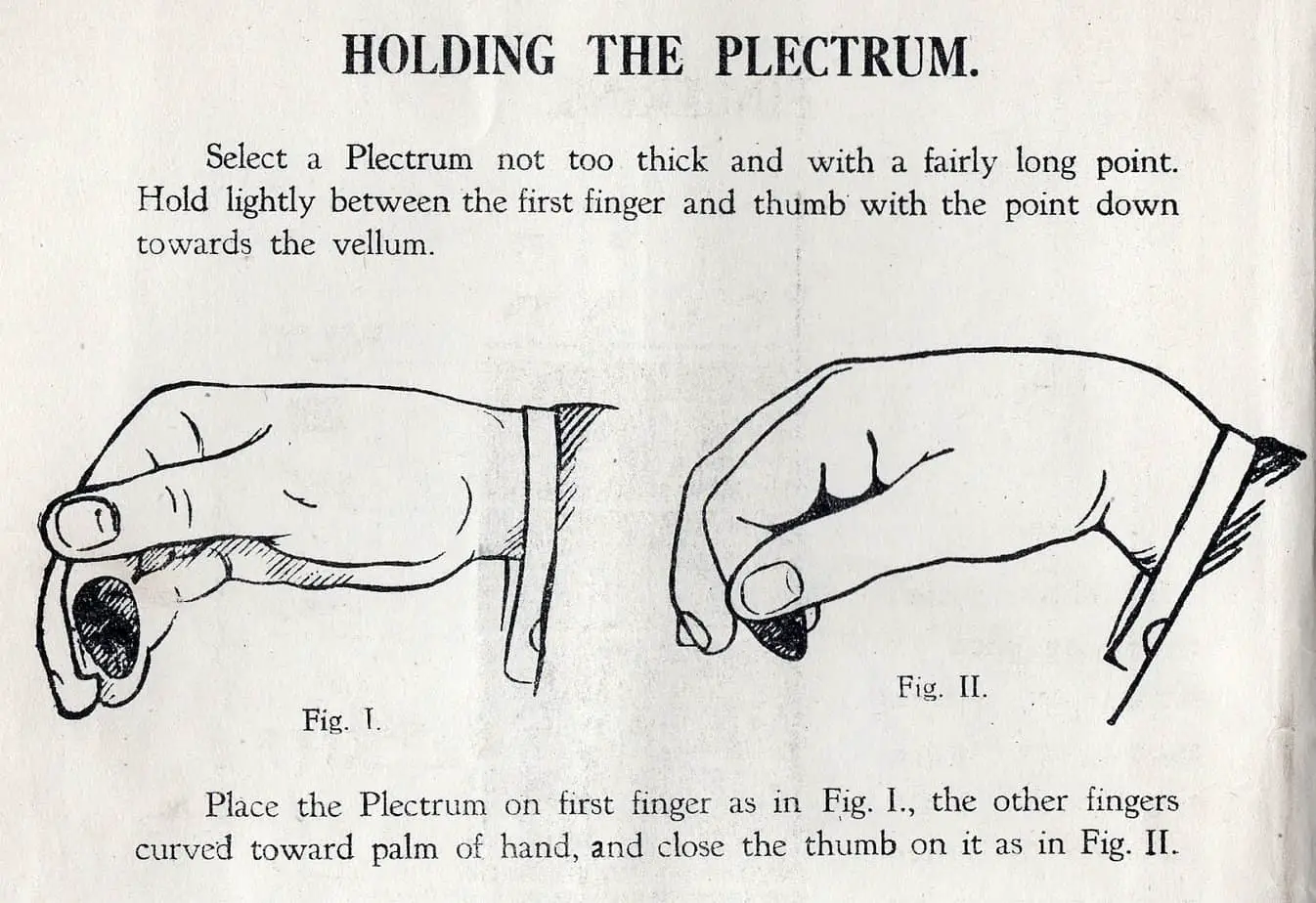As a mandolin beginner, it can be difficult to know how to hold a mandolin pick properly. After all, the right technique is essential if you want to produce great music with your instrument. Fortunately, learning how to hold a mandolin pick doesn’t have to be a daunting experience. In this article, I’ll provide an essential guide to help you get started. From the basics of how to hold your pick correctly to more advanced techniques, you’ll soon be ready to strum away like a pro!
Benefits of Holding a Mandolin Pick
- Increased accuracy and speed in playing mandolin chords and melodies
- Better control of string articulation
- More consistent tone across genres and styles
- Reduced tension in the hand and wrist
- Increased dynamic range for playing louder and softer
- Greater range of sound textures
Types of Mandolin Picks
- Standard Picks: These are the most common type of mandolin pick. They are usually made from plastic or metal and come in various shapes and sizes.
- Cone Picks: These picks have a cone-shaped head that allows for better grip and control during play. They are usually made from metal and come in a variety of shapes and sizes.
- Finger Picks: These picks are designed to be worn on the fingers and are usually made of metal. They are designed to provide the player with more control over their playing.
- Flexible Picks: These picks are designed to be flexible and allow for more control while playing. They are usually made of plastic and come in a variety of shapes and sizes.
- Thumb Picks: These picks are designed to be worn on the thumb and are usually made of metal. They are designed to provide the player with more control over their playing.
Holding the Pick with the Thumb and Index Finger
The most common way to hold a mandolin pick is by using the thumb and index finger. To do this, hold the pick between the thumb and index finger, with the tip pointing away from the palm. Adjust the grip to ensure that the pick is secure while playing. The pick should not move in the fingers when strumming. If the pick is slipping, try adjusting the grip, or using a heavier gauge pick. For maximum control, the thumb should be slightly bent and the index finger should be slightly curved.
Holding the Pick with the Thumb and Middle Finger
- Position the pick in between the thumb and middle finger, with the point facing away from your palm.
- Place the pick so that the side of the pick is flush with the side of the thumb and middle finger.
- Put your index finger on top of the pick to help secure it.
- Gently hold the pick in place with your thumb and middle finger.
- Make sure that your thumb and middle finger are not too tight, as this will cause you to tire quickly and make it difficult to maneuver the pick.
- Practice this technique until it feels comfortable.
Holding the Pick with the Thumb and Ring Finger
 | One of the most common methods of holding a mandolin pick is to hold it between the thumb and the ring finger. This method is often used by players who have a strong picking technique and is also useful for players who need strong control over their pick. To properly hold the pick between the thumb and the ring finger, the pick should be held firmly against the thumb and the ring finger should be kept slightly bent. It is important to keep the pick at an angle so that it can easily move across the strings. |
The grip should be comfortable but firm, and the thumb should be relaxed. The pick should be held at an angle so that the edge of the pick is parallel to the strings. This will make it easier to move the pick across the strings. When playing, the pick should be moved across the strings in a smooth and controlled manner. Proper pick grip and technique will ensure that the sound produced is clear and consistent.
Alternating Pick Grip
This grip involves holding the pick with your thumb and index finger, as opposed to just the thumb. The thumb and index finger should be positioned opposite each other, so that the pick is held in the middle. When strumming, the thumb and index finger should alternate between being used, in order to produce a more complex sound. This grip is particularly useful for playing chords on a mandolin, as the pick is able to go up and down the strings quickly and easily.
Rest Stroke Method
The rest stroke is a picking technique used to produce a smooth, warm sound on the mandolin. It is the most commonly used picking technique and is used to play melodies and chords. To use the rest stroke, the pick is placed on the string just behind the desired fret and then moved over the fret, making contact with the fret before plucking the string. The pick should then rest on the next string after plucking the string. This technique produces a fuller sound than the alternate picking technique as both strings vibrate simultaneously. It is important to practice this technique to ensure that the notes sound clear and that the sound is consistent.
Free Stroke Method
The free stroke method involves holding the pick between the thumb and first two fingers, with the index finger on top. This method is often used by experienced players and allows for quicker action and more control over the strength of the sound. When the pick is held in this position, it can be used to alternate between down and up strokes to create different effects. It is important to practice holding the pick in this way and to keep the grip relaxed to ensure maximum accuracy and speed.
Frequently Asked Questions
What is the Best Way to Hold a Mandolin Pick?
Holding a mandolin pick correctly is essential to producing the best sound. The best way to hold a mandolin pick is by lightly gripping it between your thumb and index finger, with the tip of the pick protruding. It is important to ensure that the pick is held firmly enough that it won’t slip during playing, but not too tightly that it will cause strain or limit movement.
What is the Difference Between a Flat Pick and a Plectrum for Playing the Mandolin?
A flat pick is typically made of plastic or metal and is used for strumming chords, whereas a plectrum is typically made of plastic, metal, or even leather and is used for precision picking of individual notes and chords. Flat picks generally have a larger surface area, while plectrums are smaller and have a pointed tip. Plectrums also give the player greater control over individual strings and can be used for a variety of different techniques.
What are the advantages of using a pick when playing the mandolin?
Using a pick when playing the mandolin allows for a greater range of dynamics and articulation. It also enables the player to articulate and pick out single notes with greater clarity, as well as play complex chords more quickly. Furthermore, using a pick can also help to improve the volume and projection of the mandolin, allowing for a fuller, richer sound.
How can I ensure I have the correct grip when holding a mandolin pick?
To ensure a correct grip when holding a mandolin pick, position the pick between the tips of your index finger and thumb, with the pick angled slightly downward and pointing away from your hand. Keep your fingers slightly curled and your wrist relaxed. Finally, hold the pick firmly, but not too tightly, so that it does not slip out of your grip.
Is it possible to use a guitar pick to play the mandolin?
Yes, it is possible to use a guitar pick to play the mandolin. While the size of a mandolin pick is usually smaller than a guitar pick, a guitar pick can be used to play the mandolin as long as the player is comfortable with the size of the pick. It is important to make sure the pick is not too thick to ensure a good sound quality.
Conclusion
It is essential for any mandolin player to find the right pick for them and to learn how to properly hold the pick. Holding the pick correctly will help you play with a smooth and even sound. Experiment with different pick sizes, shapes, and materials to find the best pick for you. With practice and patience, you can master the art of holding the mandolin pick.







